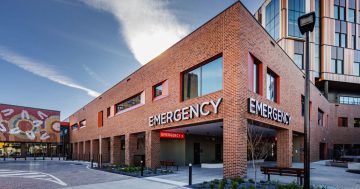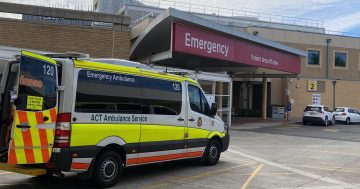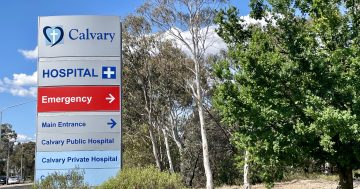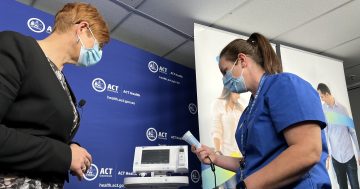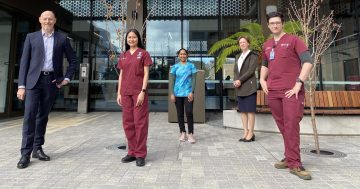
Emergency department wait times have improved across Canberra, according to the latest data. Photo: Claire Fenwicke.
Changes across the ACT’s public hospitals appear to be working as almost 62 per cent of patients started treatment in emergency departments (ED) on time.
The ED performance report for the first half of 2024 shows wait times are improving compared to the end of last year, but the data can’t be compared as apples with apples because the introduction of the Digital Health Record (DHR) in 2022 means data is collected differently.
But overall, the signs are positive that things are improving.
It’s also the first time the data could be split between Canberra Hospital (in Garran) and North Canberra Hospital (in Bruce).
Overall, there were 76,505 ED presentations across both hospitals, with about two-thirds of those people presenting at Canberra Hospital.
Looking at Canberra Hospital specifically, 62.1 per cent of patients started ED treatment on time (compared to 59.8 per cent for quarter four of 2022-23) for a median wait time of 27 minutes.
A total of 57.2 per cent of people left the ED within four hours of the presentation (either to go home or be admitted to the hospital), while 3.2 per cent did not wait to be seen.
At North Canberra Hospital, 61.4 per cent of patients started ED treatment on time, and 53.1 per cent left the ED within four hours of presentation.
Emergency Department clinical director Dr Sam Scanlan said it was too early to tell whether having Canberra Hospital and North Canberra Hospital managed by Canberra Health Services had a “big” impact on the numbers.
“There have been some improvements in terms of co-ordination of workload sharing between the two hospitals because there’s now better visibility between the flow units,” he said.
“For intensive care in particular … if the ICU at The Canberra Hospital is overflowing, we can get more patients over to North Canberra Hospital.”
That arrangement has always been in place but the process has been smoother since the transition.
For Dr Scanlan, while seeing numbers improve is great, it’s important to maintain that momentum.
While things have kept up during January, he noted emergency department workloads had increased during February.
For the Canberra Hospital, in particular, they’re seeing an average of 30 patients more each day than at the same time last year, an increase of about 10 per cent, with no clear reason.
“It seems like somewhat of a national phenomenon, so we need to get in front of that, keep increasing our staff numbers, boosting recruitment, and having education programs for staff embedded,” Dr Scanlan said.
The latest cohort of professional graduates has started in Canberra’s public health system in recent weeks, including more than 200 nurses and midwives, 96 junior medical officer interns and 59 allied health graduates.
Dr Scanlan said the graduates inserted into the emergency department were being brought up to speed by the senior nursing team.
“[They’re] the backbone of keeping the emergency department running,” he said.
“But the performance [results] are whole-of-hospital related; it’s measured at the front door and is indicative of what’s happening across the hospital.”
The report further noted that some issues about how the DHR collects the data are ongoing.
“Due to data quality issues related to contemporaneous capture of clinical care in the DHR, data in this report may not reflect the timeline of actual clinical care provided,” it stated.
It’s a particularly important note for the resuscitation category, where all patients were seen on time, but the data reflected when it was actually put into the system.
Dr Scanlan said the issues were known and work was continuing to make sure everything was as accurate as possible.
“There are human factors at the front end … then there’s backend system logic [processes that need addressing].”














